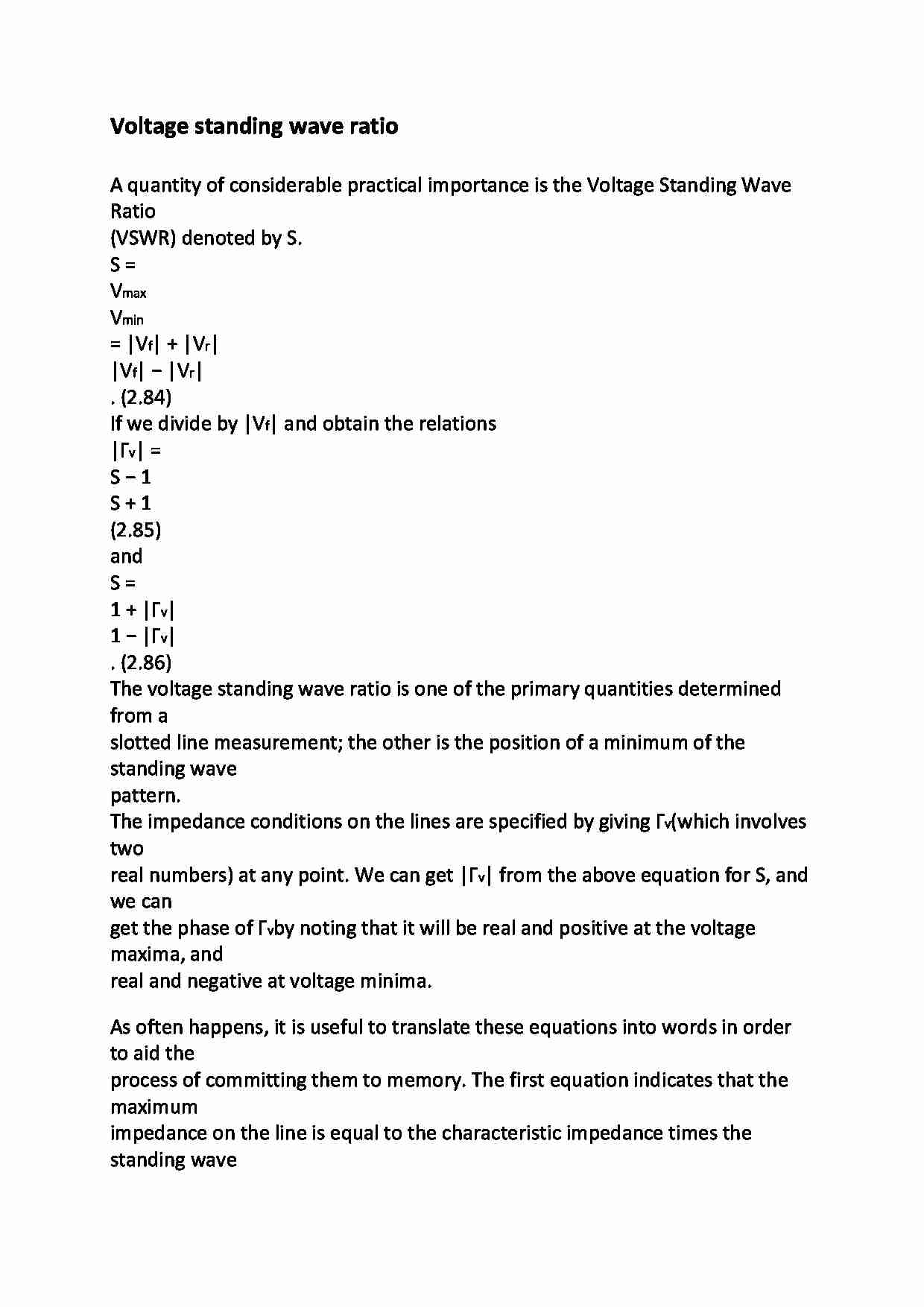To tylko jedna z 2 stron tej notatki. Zaloguj się aby zobaczyć ten dokument.
Zobacz
całą notatkę


Voltage standing wave ratio A quantity of considerable practical importance is the Voltage Standing Wave Ratio
(VSWR) denoted by S.
S =
Vmax
Vmin
= |Vf | + |Vr|
|Vf | − |Vr|
. (2.84)
If we divide by |Vf | and obtain the relations
|Γv| =
S − 1
S + 1
(2.85)
and
S =
1 + |Γv|
1 − |Γv|
. (2.86)
The voltage standing wave ratio is one of the primary quantities determined from a
slotted line measurement; the other is the position of a minimum of the standing wave
pattern.
The impedance conditions on the lines are specified by giving Γv (which involves two
real numbers) at any point. We can get |Γv| from the above equation for S, and we can
get the phase of Γv by noting that it will be real and positive at the voltage maxima, and
real and negative at voltage minima.
As often happens, it is useful to translate these equations into words in order to aid the
process of committing them to memory. The first equation indicates that the maximum
impedance on the line is equal to the characteristic impedance times the standing wave
ratio, while the minimum impedance on the line is equal to the characteristic impedance
divided by the standing wave ratio.
We will take up the question of standing wave ratio again in the next chapter is the
context of the study of the Smith Chart.
... zobacz całą notatkę




Komentarze użytkowników (0)